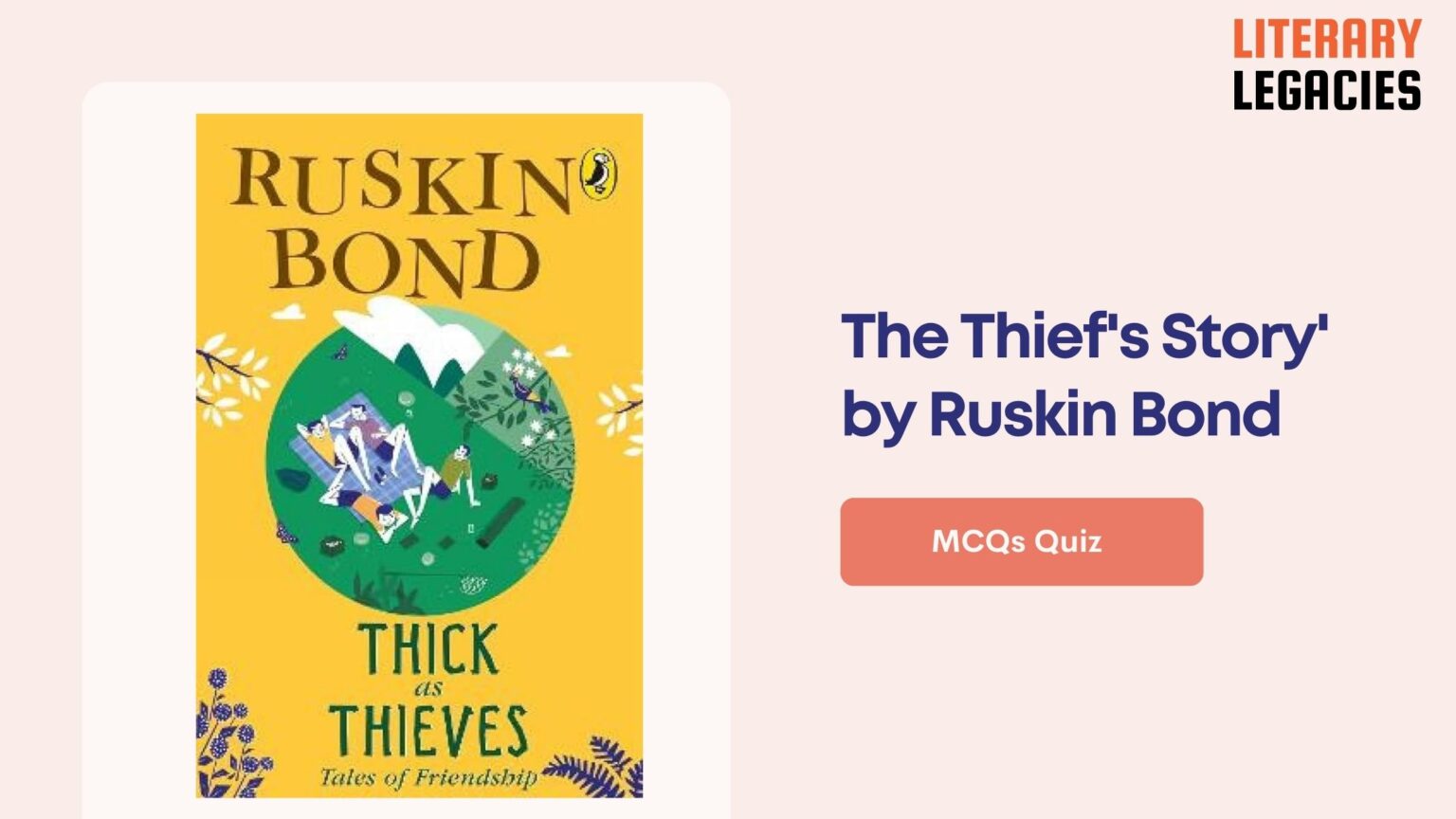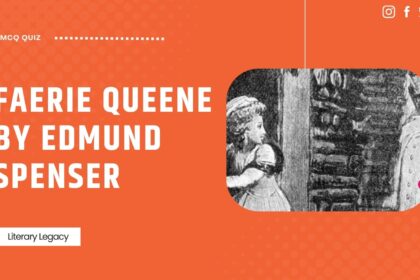1. What was Hari Singh’s occupation in the story?
A. Wrestler
B. Thief
C. Writer
D. Cook
Answer: Thief (B)
Hari Singh was a thief who befriended people to rob them.
2. What was Anil’s age in the story?
A. 20 years
B. 30 years
C. 25 years
D. 35 years
Answer: 25 years (C)
Anil was 25 years old when he met Hari Singh.
3. What was Anil’s profession in the story?
A. Chef
B. Writer
C. Teacher
D. Wrestler
Answer: Writer (B)
Anil was a writer who earned a small amount of money from his published articles.
4. Why did Hari Singh ask Anil for some work?
A. To befriend Anil and eventually rob him
B. To learn cooking skills
C. To learn writing skills
D. To become a wrestler
Answer: To befriend Anil and eventually rob him (A)
Hari Singh asked Anil for some work as part of his plan to befriend and rob him.
5. What did Anil promise to teach Hari?
A. Wrestling skills
B. Reading, writing, and adding numbers
C. Cooking skills
D. All of the above
Answer: Reading, writing, and adding numbers (B)
Anil promised to teach Hari how to read, write, and add numbers.
6. What did Hari steal from Anil?
A. Money kept under the mattress
B. A bundle of notes
C. A book
D. A wristwatch
Answer: Money kept under the mattress (A)
Hari stole the money that was kept under Anil’s mattress.
7. Why did Hari change his mind and decide to return to Anil?
A. Anil promised to give him more work
B. He needed more money
C. He was caught by the police
D. He felt guilty about stealing from Anil
Answer: He felt guilty about stealing from Anil (D)
Hari felt guilty about stealing from Anil and decided to return to him.
8. What did Anil give to Hari when he woke up the next morning?
A. A meal
B. A book
C. Fifty rupees
D. A bundle of notes
Answer: Fifty rupees (C)
Anil gave Hari fifty rupees, a full month’s payment, when he woke up the next morning.
9. What was the condition of the money when Hari touched it?
A. Clean
B. Dry
C. Moist
D. Dirty
Answer: Moist (C)
The money was still moist when Hari touched it.
10. Where did Hari go after stealing the money from Anil?
A. The railway station
B. The police station
C. The hotel
D. The market
Answer: The railway station (A)
Hari went to the railway station to catch a train to Lucknow after stealing the money from Anil.
11. What is the primary theme of ‘The Thief’s Story’ by Ruskin Bond?
A. The struggle for independence in India
B. The importance of social status
C. The consequences of moral dilemmas
D. The power of trust and kindness in transforming lives
Answer: The power of trust and kindness in transforming lives (D)
The story explores the transformative power of trust and kindness in Hari’s life.
12. What is the significance of the setting in ‘The Thief’s Story’?
A. It is a backdrop for the writer’s personal experiences
B. It is a symbol of Hari’s moral struggle
C. It reflects the socio-economic realities of post-independence India
D. It provides a contrast to the characters’ personalities
Answer: It reflects the socio-economic realities of post-independence India (C)
The story is set in post-independence India, which reflects the socio-economic realities of the time.
13. What is the impact of Anil’s trust and kindness on Hari?
A. It makes Hari more determined to steal from Anil
B. It inspires Hari to change his ways and make amends
C. It creates a sense of distrust between Hari and Anil
D. It has no effect on Hari’s moral compass
Answer: It inspires Hari to change his ways and make amends (B)
Anil’s trust and kindness inspire Hari to change his ways and make amends.
14. What is the author’s message in ‘The Thief’s Story’?
A. That trust and kindness can inspire positive change
B. That social status is more important than personal relationships
C. That trust and kindness can lead to moral corruption
D. That personal growth and redemption are impossible
Answer: That trust and kindness can inspire positive change (A)
The story conveys the message that trust and kindness can inspire positive change.
15. What is the character of Hari used to explore in the story?
A. The power of greed and temptation
B. The consequences of independence
C. The theme of redemption and moral conflict
D. The importance of social status
Answer: The theme of redemption and moral conflict (C)
The character of Hari is used to explore themes of redemption and moral conflict.
16. What is the narrative of ‘The Thief’s Story’?
A. A story of social reform and activism
B. A tale of revenge and betrayal
C. A struggle for power and control
D. A journey of self-discovery and redemption
Answer: A journey of self-discovery and redemption (D)
The narrative is a journey of self-discovery and redemption for Hari.
17. What is the role of Anil in the story?
A. A catalyst for Hari’s moral growth
B. A symbol of moral corruption
C. A foil to Hari’s thieving nature
D. A representation of India’s struggle for independence
Answer: A catalyst for Hari’s moral growth (A)
Anil’s kindness and trust inspire Hari to change his ways.
18. What is the tone of the story?
A. Dark and cynical
B. Melancholic and introspective
C. Vibrant and optimistic
D. Somber and reflective
Answer: Vibrant and optimistic (C)
The story has a vibrant and optimistic tone, despite its themes of moral struggle.
19. What is the significance of the turning point in the story?
A. It showcases Anil’s gullibility and trust
B. It illustrates the transformative power of empathy and human connection
C. It marks the beginning of Hari’s moral downfall
D. It is a random event in the story
Answer: It illustrates the transformative power of empathy and human connection (B)
The turning point illustrates the transformative power of empathy and human connection.
20. What is the heart of the story ‘The Thief’s Story’?
A. A study of the human psyche and moral behavior
B. A commentary on India’s socio-economic realities
C. A portrayal of human relationships and personal growth
D. A tale of theft and deception
Answer: A portrayal of human relationships and personal growth (C)
The story is a heartwarming portrayal of human relationships and personal growth.
21. What is the central idea behind the plot of ‘The Thief’s Story’?
A. That honesty is always the best policy.
B. That kindness and love can change even the worst people.
C. That trust and loyalty are only temporary.
D. That thieves and crooks can never change their ways.
Answer: That kindness and love can change even the worst people. (B)
The story explores the transformative power of kindness and love.
22. What does the narrative of ‘The Thief’s Story’ focus on?
A. The multiple themes of friendship, treachery, aspirations, and more.
B. The struggle for survival in a harsh world.
C. The importance of friendship and loyalty.
D. The consequences of stealing and dishonesty.
Answer: The multiple themes of friendship, treachery, aspirations, and more. (A)
The story delves into various themes that are interconnected.
23. What is the significance of Anil’s character in the story?
A. He serves as a foil to Hari’s character.
B. He is a mere acquaintance of Hari’s.
C. He embodies the values of kindness, trust, and loyalty.
D. He represents the harsh realities of the world.
Answer: He embodies the values of kindness, trust, and loyalty. (C)
Anil’s character is crucial in showcasing the transformative power of kindness.
24. What does the story suggest about the nature of people?
A. People can change and grow with the right influence.
B. People are inherently good and will always make the right choice.
C. People’s nature is fixed and cannot be changed.
D. People are inherently bad and will never change.
Answer: People can change and grow with the right influence. (A)
The story proposes that people have the capacity to change and grow.
25. What is the tone of the narrative in ‘The Thief’s Story’?
A. Angry and aggressive, with a focus on the consequences of theft.
B. Dark and pessimistic, with a focus on the harsh realities of life.
C. Indifferent and neutral, with a focus on the facts of the story.
D. Optimistic and hopeful, with a focus on the power of kindness.
Answer: Optimistic and hopeful, with a focus on the power of kindness. (D)
The story has a hopeful and optimistic tone, emphasizing the transformative power of kindness.



